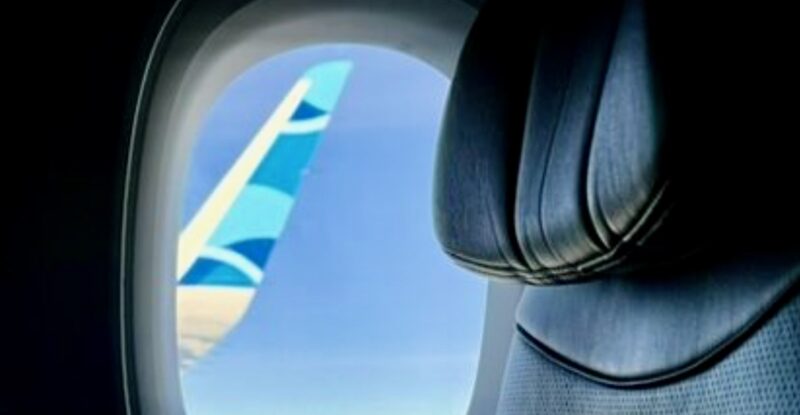JetBlue Airways has extended its partnership with Viasat, and will adopt the Carlsbad, California-based firm’s new multi-orbit capable Amara Ka-band inflight connectivity solution on new aircraft.
“We’re thrilled that Viasat and JetBlue have extended our partnership, building on over a decade of high-flying collaboration to bring fast, free in-flight connectivity to millions of JetBlue customers,” Viasat said in a statement published on LinkedIn.
“The expanded partnership includes installing new aircraft with Viasat Amara, our next-gen IFC solution; plus, a multi-year extension of service on aircraft already equipped with Viasat’s latest technology.”
Specific details — including the number of new tails to be fitted — and financial terms have not been disclosed. And JetBlue did not provide immediate comment. The New York-based airline has orders with Airbus for A321neos, as well as longer range A321LRs and A321XLRs.
Announced earlier this year at the Aircraft Interiors Expo in Hamburg, Viasat’s Amara solution is based on its GM-40 gimbaled antenna, but with a twist. In addition to accessing the satellite operator and aero ISP’s high-capacity Ka-band geostationary (GEO) satellites — both Viasat’s own and its partners’ satellites — the Amara hardware will have access to all the Global Xpress satellites that Viasat acquired when it bought Inmarsat, including the GX payloads on HEO satellites which will soon provide polar coverage.
Amara is also forward compatible with Telesat’s forthcoming Lightspeed Low Earth Orbit (LEO) service, which is expected to go live in the late-2027 timeframe. This will enable Viasat to power multi-orbit GEO/LEO IFC services for JetBlue over the GM-40 terminal.
Additionally, Amara benefits from Viasat’s next-gen ViaSat-3 ground infrastructure, and it will be able to tap into all three ViaSat-3 satellites when the global constellation is complete, including the much anticipated ViaSat-3 F2 satellite, which is scheduled to launch next month.
“The ViaSat-3 satellites were designed so that each of the three can be operated in each part of the world. The ViaSat-3 F2 satellite is planned to cover the Americas,” a Viasat spokesperson told Runway Girl Network, confirming our reporting from February.
Whilst an anomaly on the ViaSat-3 F1 satellite means the bird is delivering less than 10% of its expected capacity, Viasat has put that capacity to good use on air routes to Hawaii.
Viasat’s new arrangement with JetBlue falls hard on the heels of the airline’s announcement last week that it will bring Amazon’s Ka-band LEO-based Project Kuiper inflight connectivity solution to aircraft currently flying with Viasat’s first-generation IFC system.
Whilst the Kuiper news is a blow to Viasat, which pioneered free, fast Wi-Fi for JetBlue in 2013, the firm is celebrating its newly extended contract with the airline.
“This extension is a testament to the strong relationship and shared vision between Viasat and JetBlue,” Viasat said.
“Together, we’re committed to providing a connected, enjoyable experience for JetBlue’s customers. Here’s to many more years of innovation and collaboration.”
Related Articles:
- JetBlue is first airline to sign for Amazon Kuiper inflight Wi-Fi
- Viasat details Amara nextgen inflight connectivity
- Amazon hiring in aero as Project Kuiper reaches over 100 satellites
- JetBlue observes fundamental change in passenger behavior
Featured image credited to Jason Rabinowitz












